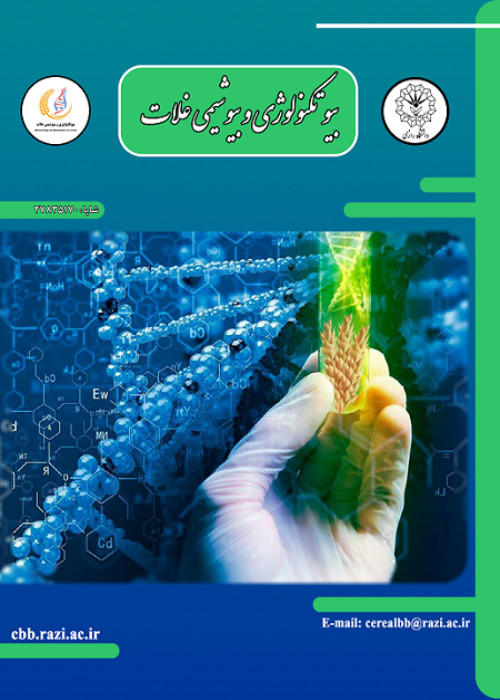Association analysis of agro-physiological traits with SCoT markers in durum wheat (Triticum durum Desf.)
Knowledge of genetic diversity in crop species can play an important role in exploiting genetic diversity and lead to the development and expansion of crop cultivation in drought-prone environments. In this regard, identifying and utilizing informative markers related to agro-physiological traits will be necessary for application in breeding programs and marker-assisted selection.
This study was performed to investigate the relationship between SCoT markers and agro-physiological traits in the durum wheat breeding germplasm. For this purpose, 220 durum wheat genotypes were evaluated for agronomic, phenological, and physiological traits. They were received from the International Center for Agricultural Research in the Dry Areas (ICARDA) and International Maize and Wheat Improvement Center (CIMMYT) during two consecutive cropping seasons (2017-18 and 2018-19). The germplasm was also genotyped using five SCoT markers. In order to identify the informative markers related to each trait, the regression analysis method was used.
According to the results, considerable variation for agro-physiological traits was observed in the studied germplasm. The majority of ICARDA germplasms that most favored by grain yield, 1000-kernel weight (TKW), normal difference vegetative index (NDVI), plant height (PH), and peduncle length (PL) well separated from the majority of CIMMYT germplasm that most favored late in the heading (DH) and maturity (DM) and higher canopy temperature (CT). These findings indicate that the breeding lines originally developed from ICARDA might possess traits of tolerance to drought conditions absent in those developed in CIMMYT. 13 SCoT loci were associated with at least three traits based on trait-marker association analysis. These markers would enhance the efficiency of parental selection in the durum wheat breeding programs. Six informative SCoT loci (SCoT16-845, SCoT16-965, SCoT33-780, SCoT24-1400, SCoT16-845, and SCoT25-680) were identified as repeatable markers that can be considered as candidate markers for assessment of other wheat germplasm collections and scanning the genome for the related traits.
This study based on phenotypic data and SCoT markers revealed a high level of diversity in durum wheat breeding germplasm that may be useful in breeding programs. This information is valuable for germplasm grouping and determination of different phenotypic and genotypic groups, developing high-yielding genotypes, and using cross-breeding programs.
- حق عضویت دریافتی صرف حمایت از نشریات عضو و نگهداری، تکمیل و توسعه مگیران میشود.
- پرداخت حق اشتراک و دانلود مقالات اجازه بازنشر آن در سایر رسانههای چاپی و دیجیتال را به کاربر نمیدهد.



